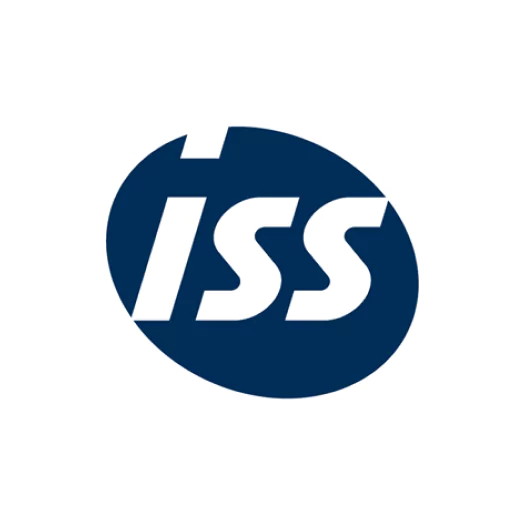Ever wondered how e-commerce sites update shopping carts instantly or how banking apps process transactions in real time? The answer lies in a in-memory database, which stores data in RAM instead of disks for lightning-fast access.
With businesses handling massive amounts of data daily, speed is a necessity. In-memory databases are extremely fast because they keep all data in RAM instead of using disks. As a result, they reduce delays and allow real-time access, so they are essential for applications that need quick data retrieval.
But what exactly is an in-memory database, and how does it differ from traditional storage? Is speed alone enough to justify the switch, or are there other factors to consider? Understanding it is essential for developers, architects, and business leaders who want to utilize it optimally.
This article will explain what an in-memory database system is and how it will help with storing and retrieving data. So, read more to find out!
Key Takeaways
|
What is an In-Memory Database?
An in-memory database stores data in RAM instead of traditional disk storage. In many business applications, data retrieval speed is crucial for efficiency. While disk drives (like SSDs) access may only take milliseconds, delays add up when handling large volumes of data.
Thus, the in-memory database solves this problem by keeping the data in the internal memory, so data retrieval is way quicker. While in-memory databases offer speed, they risk data loss during server failures since RAM is volatile.
They’re also costly and have limited storage compared to disk-based solutions. So, to conclude, they’re ideal for high-speed applications where some data loss is acceptable, like e-commerce shopping carts. However, critical data should still be stored on persistent storage.
Benefits of an In-Memory Database
An in-memory database processes data much faster than traditional storage methods. Here are the benefits that make it a powerful choice for high-speed applications:
1. Real-Time Responses with Low Latency
Latency is the delay between a data request and response. In-memory databases maintain consistently low latency, offering microsecond reads and millisecond writes. This enables real-time decision-making, such as instant sensor processing in self-driving cars for emergency braking.
2. High throughput
These databases handle a large volume of read and write operations efficiently, measured in transactions per second or data processed per minute.
3. Scalability without performance loss
In-memory databases can scale dynamically to meet demand while staying online. Both read and write operations continue smoothly, even during resizing.
4. Quick Performance
In-memory computing keeps frequently accessed data in RAM, delivering lightning-fast responses. Since RAM is much quicker than even the fastest SSDs, it powers real-time analytics and high-speed processing effortlessly.
5. Smarter Data Access
With fewer CPU instructions needed for retrieval, in-memory databases accelerate data processing. By storing structured data in a ready-to-use format, they handle complex operations with ease, making real-time insights a reality.
Limitations of an In-Memory Database
While it offers advantages in speed and performance, an in-memory database has its drawbacks. Here are the limitations to consider before implementing it:
1. Data Loss Risk
Since RAM is volatile, data disappears if the system crashes, loses power, or fails. Without backup methods like replication or logging, all stored data could be lost instantly.
2. High Cost
Although RAM prices have dropped, it’s still much more expensive than disk storage. This makes in-memory databases pricier than traditional ones.
3. Limited Storage
RAM has far less space than disks. If memory runs out, new data may not be stored, so the users have to prioritize what gets saved.
While in-memory databases offer unmatched speed, companies must consider the total cost of ownership. RAM is significantly more expensive than disk storage, making it important to balance speed, cost, and long-term scalability.
How Does an In-Memory Database Work?

Storing all company data in memory isn’t practical, so in-memory databases use a mix of hot storage (RAM) for frequently accessed data and cold storage (disk/SSD) for less critical information. These concepts come from cloud computing.
- Hot storage holds mission-critical data in memory for ultra-fast access and real-time processing.
- Cold storage stores rarely used data on disk or SSD, offering cheaper and scalable storage for historical records and old projects.
During implementation, teams classify data into hot or cold storage to optimize performance. Then, to prevent data loss, in-memory databases log all transactions and changes, so backup and recovery can still run while maintaining high-speed operations, even after power failures.
To optimize workflows, businesses often pair in-memory databases with business process management software. This combination helps automate processes, improve data flow, and support real-time decision-making without delays.
Difference between In-Memory Cache vs. In-Memory Database
Both in-memory databases and in-memory caches store data in RAM, but they serve different purposes and have distinct characteristics.
1. Purpose
- In-Memory Database: Acts as the primary data store, replacing traditional disk-based databases. It is designed for full transactional support and long-term data storage.
- In-Memory Cache: Works as a temporary storage layer that speeds up data retrieval by reducing the need to access a database or disk storage repeatedly.
2. Data Persistence
- In-Memory Database: Can persist data using techniques like snapshots, transaction logging, and replication to prevent data loss.
- In-Memory Cache: Usually does not persist data and is designed for temporary storage. If the cache is cleared or the system restarts, the data is lost.
3. Data Structure and Management
- In-Memory Database: Organizes data like traditional databases with tables, indexes, and query languages (e.g., SQL). It supports complex queries, relationships, and transactional consistency.
- In-Memory Cache: Stores simple key-value pairs or objects. It does not handle complex queries or relationships but is optimized for fast lookups.
4. Usage Scenario
- In-Memory Database: Used as the main database for applications needing real-time data processing, such as financial transactions, analytics, and ERP systems.
- In-Memory Cache: Used as a performance booster for frequently accessed data, such as website session storage, API responses, or temporary user data.
5. Data Expiry and Refresh
- In-Memory Database: Data remains in memory and is updated like a traditional database. It is designed for long-term data retention.
- In-Memory Cache: Data expires or is evicted based on predefined rules (e.g., least recently used data is removed). It refreshes data by fetching new values from a database or external source.
If you need a primary data store that supports transactions and durability, use an in-memory database. However, if you need a temporary, high-speed storage layer to reduce database load and improve response times, use an in-memory cache.
Use Cases of In-Memory Database
Affordable in-memory systems have made faster processing accessible for various business applications, not just high-volume transactions. They’re ideal for data-heavy tasks like analytics, simulations, and handling unpredictable traffic spikes.
Companies dealing with rapid data growth benefit the most, including:
- Medical device monitoring
- Real-time financial analytics
- Online banking and credit card transactions
- E-commerce and online auctions
- Market data tracking for new products
- Machine learning for billing and subscriptions
- Geographic information system (GIS) processing
- IoT sensor data streaming
- Network and grid management
- A/B testing for online ads
- Interactive gaming
Many companies in Malaysia rely on ERP software to manage large-scale data processing efficiently. By integrating an in-memory database, businesses can improve real-time analytics and enhance decision-making speed.
Tips to Maximize the Benefits of In-Memory Database

To get the most out of an in-memory database, follow these best practices:
1. Use a Hot and Cold Data Strategy
Store frequently accessed, time-sensitive data in memory (hot storage) while keeping less-used data on disk (cold storage). This balances speed and cost efficiency.
2. Optimize Data Compression
Use compression techniques to reduce memory usage and fit more data in RAM without affecting performance.
3. Implement Data Persistence
Enable transaction logging, snapshots, or replication to prevent data loss in case of system failures. This ensures durability while maintaining speed.
4. Scale Memory Efficiently
Monitor usage and scale RAM capacity based on demand. Distributed in-memory databases help manage large-scale data without performance bottlenecks.
5. Tune Queries for Speed
Optimize query performance by indexing frequently accessed data and minimizing unnecessary computations. This speeds up retrieval times.
6. Use Parallel Processing
Leverage multi-threading and parallel execution to maximize the processing power of an in-memory database, especially for analytics and real-time workloads.
7. Set Up Automated Caching
Combine in-memory databases with caching strategies to reduce repeated computations and enhance performance for read-heavy applications.
8. Monitor and Optimize Memory Usage
Regularly analyze memory consumption and fine-tune data structures to prevent bottlenecks and ensure efficient resource utilization.
Conclusion
An in-memory database speeds up data retrieval by storing frequently used data in RAM instead of disks. It’s perfect for real-time applications but comes with risks like data loss, high costs, and limited storage. Proper planning and data management help maximize its benefits.
With HashMicro ERP, businesses can leverage in-memory database technology to handle large-scale transactions and real-time analytics effortlessly. Its smart data processing features reduce latency, optimize storage, and maintain data integrity, solving common in-memory database challenges.
You get the speed of RAM without sacrificing security or scalability. With HashMicro’s powerful ERP, you get speed, reliability, and efficiency in one system. No more slow data processing or storage limits; just smooth, high-performance operations tailored to your needs.
So, what are you waiting for? Try the free demo now!

Frequently Asked Questions on Memory Database Syste,
-
Are there in-memory NoSQL databases?
Yes, several in-memory databases follow a NoSQL structure. Redis and Memcached are two of the most popular in-memory NoSQL databases, often used for caching, real-time data processing, and session storage. Unlike traditional relational databases, they store data in key-value pairs and do not rely on structured query language (SQL).
-
How do in-memory databases ensure data durability?
They use snapshots, transaction logging, and replication to prevent data loss. Some advanced systems rely on non-volatile memory (NVM) for persistence.
-
What are the disadvantages of in-memory databases?
They are expensive, have limited storage, and risk data loss if no persistence method is used. This makes them less suitable for long-term data storage.

































